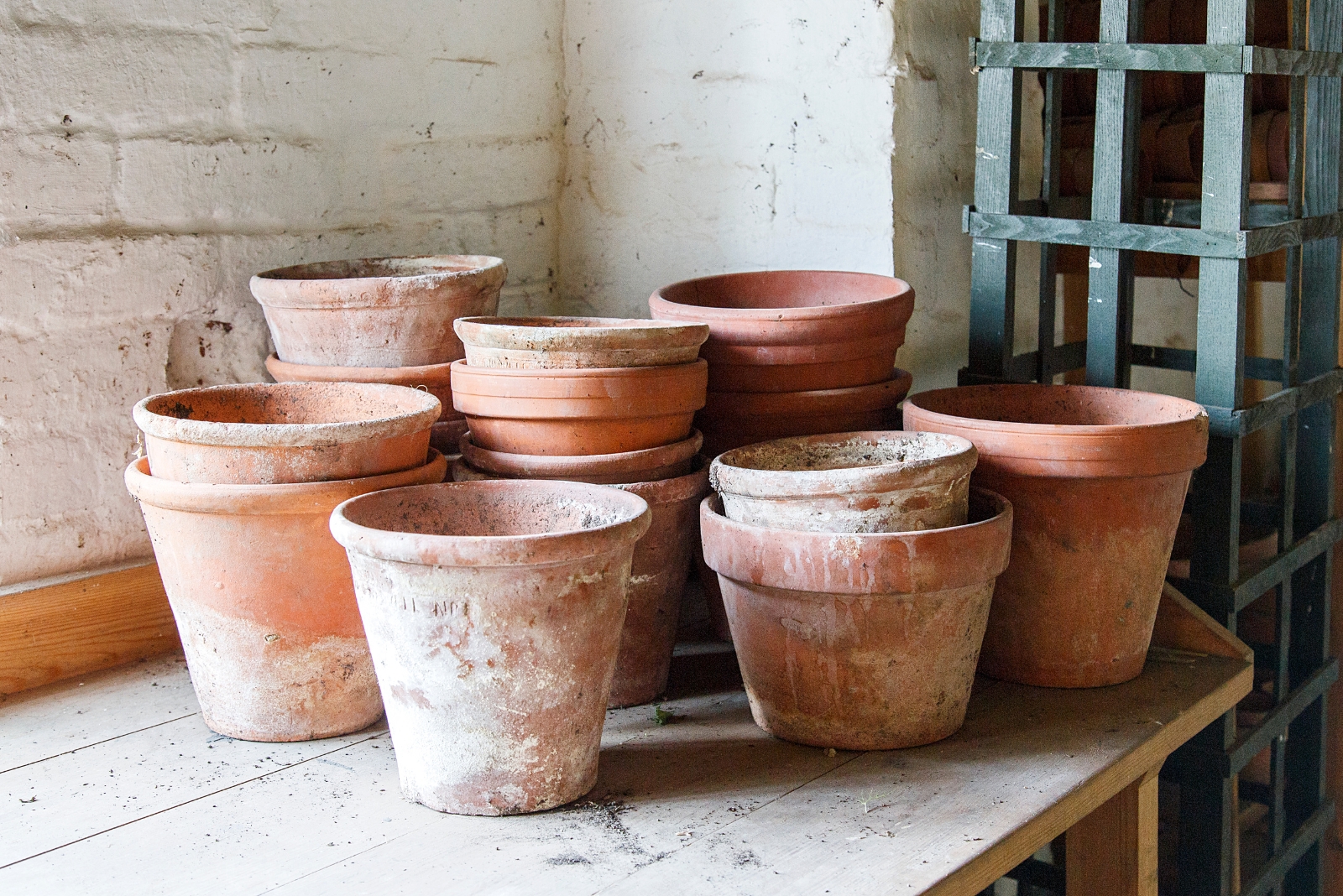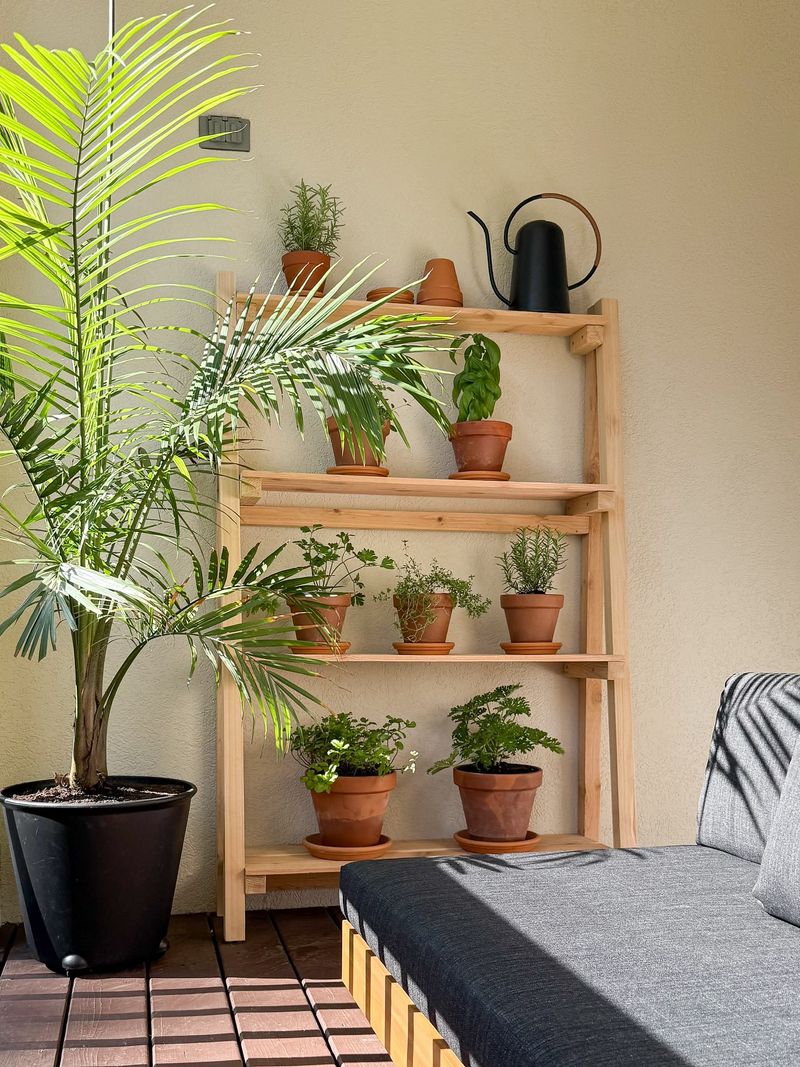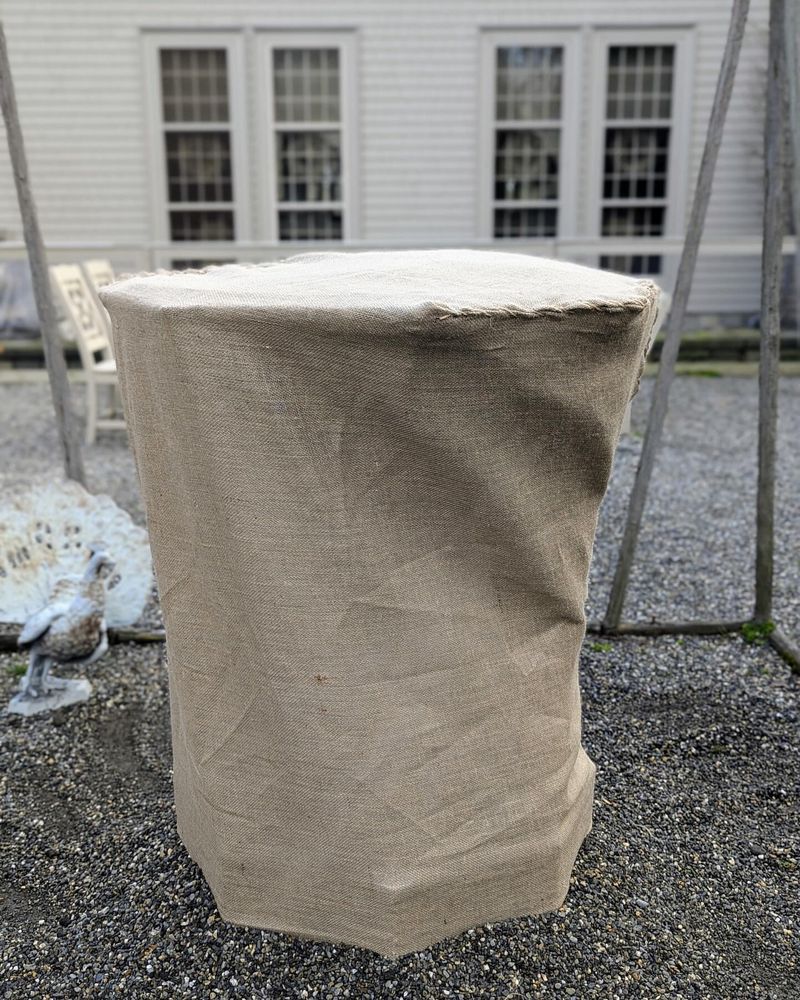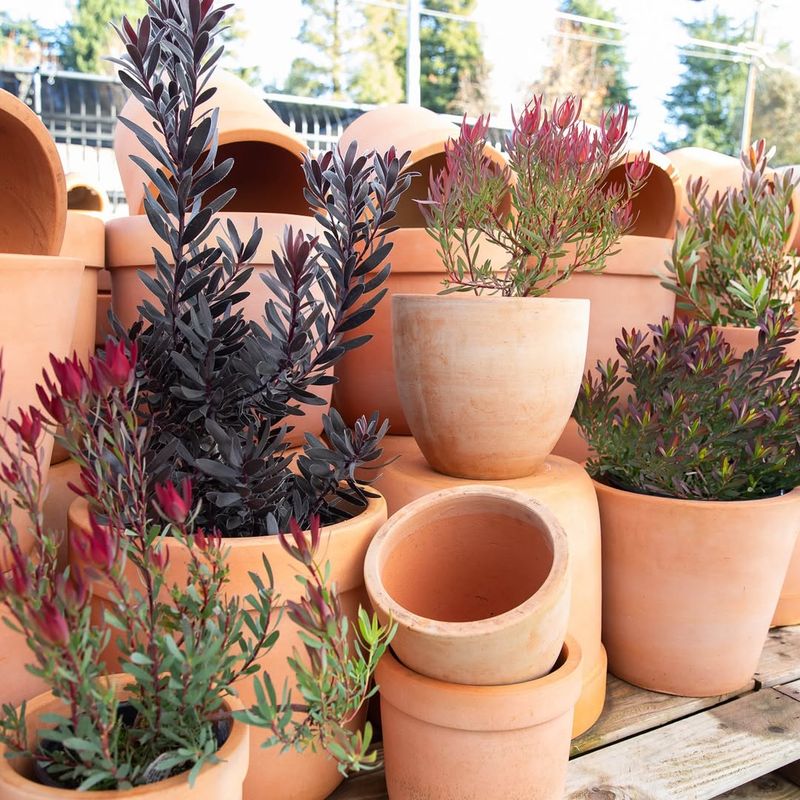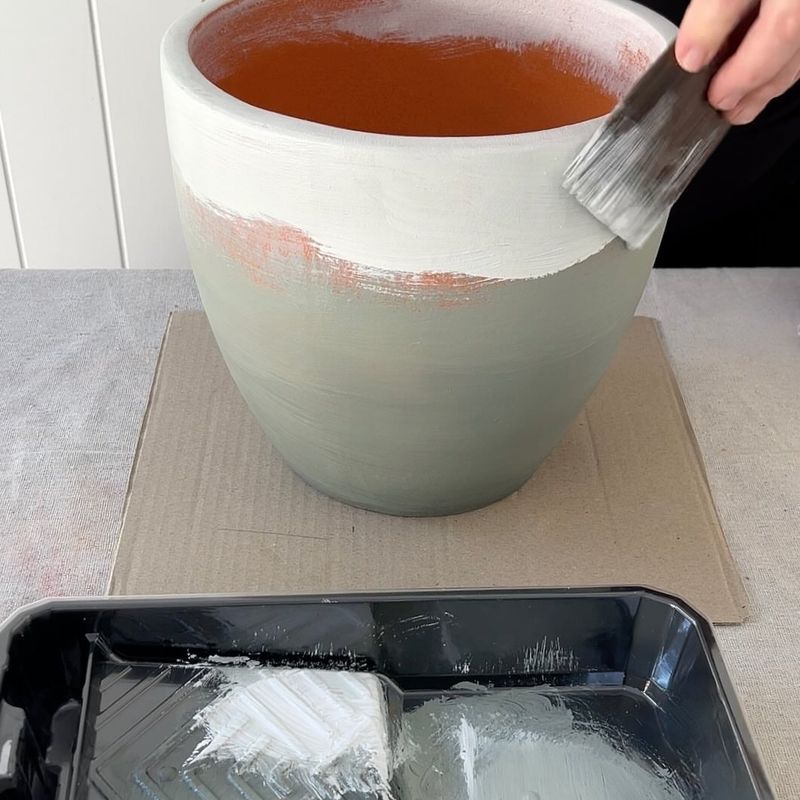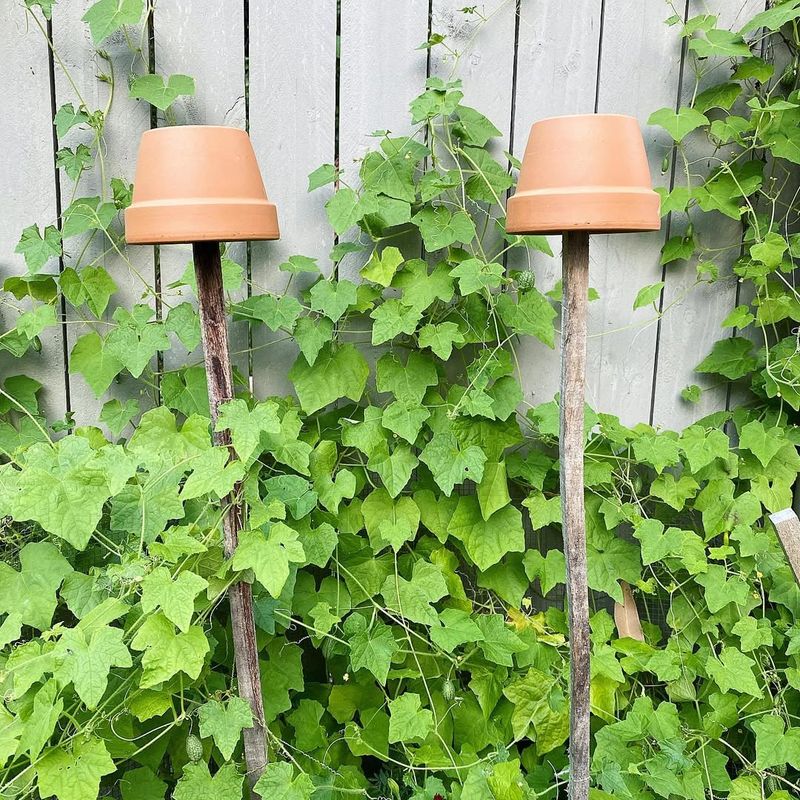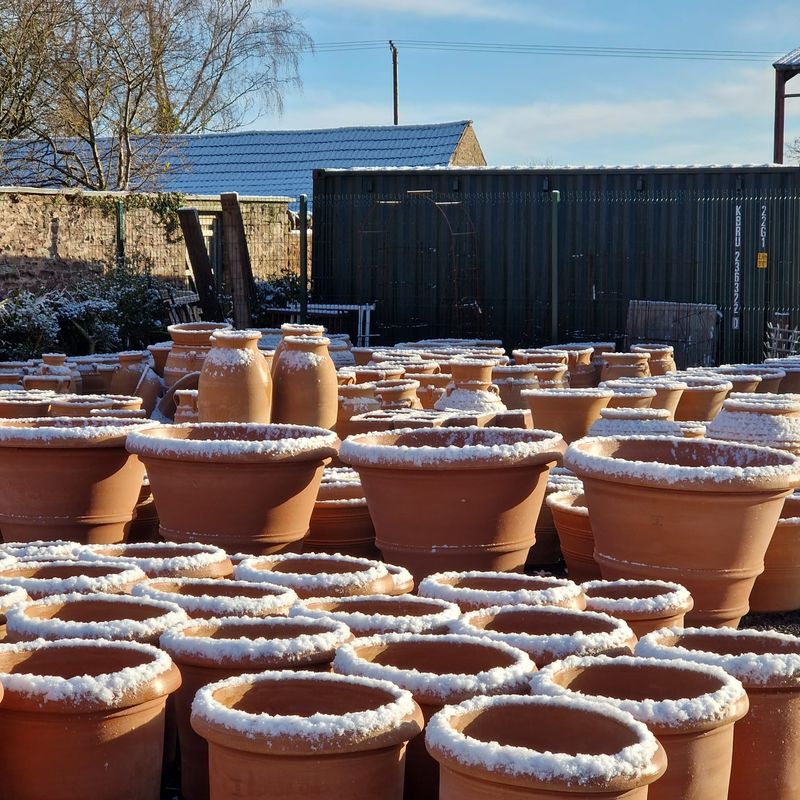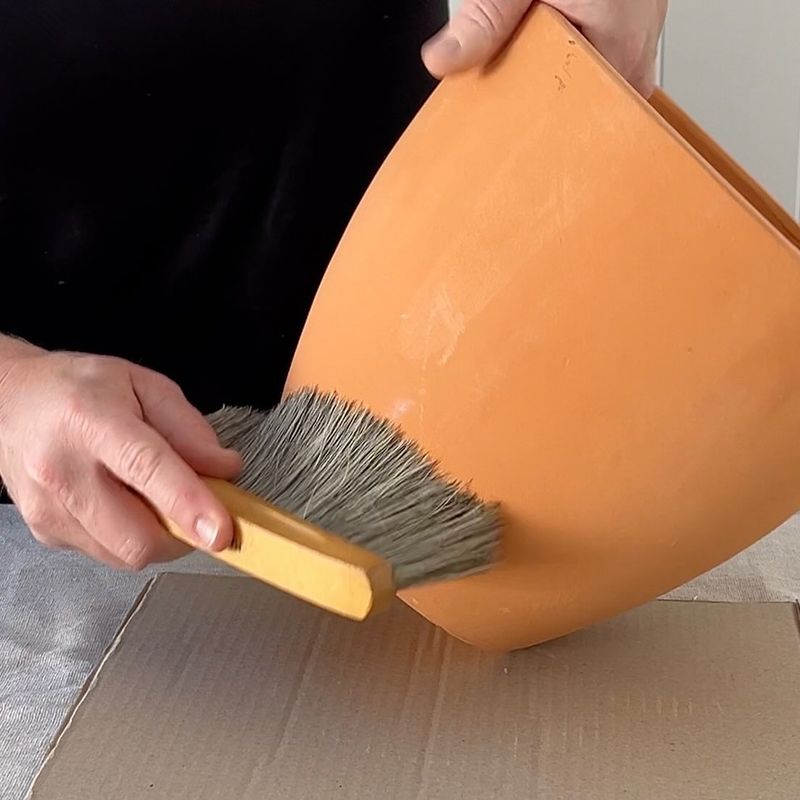Pennsylvania winters can be brutal on terracotta pots. Freezing temperatures cause water inside the clay to expand, leading to cracks and breaks that ruin your favorite planters. Gardeners across the state have learned clever tricks to keep their terracotta collection safe until spring arrives.
With a little preparation, you can protect these beautiful pots and use them for many years to come.
1. Moving Pots Into Covered Spaces
Bringing your terracotta pots indoors or under cover is one of the simplest protection methods. Garages, sheds, and covered porches work perfectly for winter storage. Your pots stay completely dry, which prevents the freeze-thaw cycle that causes cracking.
Even an unheated garage provides enough shelter from snow and ice. Stack smaller pots carefully inside larger ones to save space. Remember to clean off any soil first to avoid attracting pests during storage months.
2. Wrapping Pots With Burlap
Burlap creates an insulating layer that shields terracotta from extreme temperature swings. Wind chill and sudden cold snaps become less dangerous when pots have this protective covering. Pennsylvania garden centers sell burlap specifically for winterizing plants and containers.
Wrap the fabric around your pots and secure it with twine or zip ties. Leave the bottom open so moisture can escape instead of pooling inside. Burlap also adds a rustic look to your winter garden while keeping pots safe.
3. Elevating Pots Off The Ground
Raising terracotta pots prevents them from sitting in puddles of melted snow. Pot feet, bricks, or wooden blocks create air circulation underneath, allowing water to drain away quickly. Constant contact with frozen ground accelerates damage to clay surfaces.
Many Pennsylvania garden supply stores sell decorative pot feet in various styles and heights. Even improvised risers work well if you use weather-resistant materials. Better drainage means less moisture gets absorbed into the porous terracotta walls.
4. Applying Waterproof Sealant
Sealing terracotta before winter creates a moisture barrier that reduces water absorption. Products like Thompson’s Water Seal or specialized terra cotta sealers work well for this purpose. Apply sealant during fall when temperatures stay above fifty degrees for proper drying.
Brush or spray the product evenly across both inside and outside surfaces. Most sealants need two coats for maximum protection against Pennsylvania’s wet winter weather. Reapply every couple of years to maintain effectiveness.
5. Storing Pots Upside Down
Flipping your terracotta pots over prevents snow and rain from collecting inside them. Water accumulation is the main enemy of clay pots during freezing weather in Pennsylvania. When moisture has nowhere to pool, it cannot freeze and expand to crack the material.
Place inverted pots on a dry surface in your yard or garden area. This method works especially well if you cannot move pots to sheltered locations. Combining upside-down storage with elevation provides double protection against winter damage.
6. Using Foam Or Bubble Wrap Insulation
Wrapping pots with foam sheets or bubble wrap adds a cushioning layer against Pennsylvania cold. Hardware stores carry foam pipe insulation that works perfectly for cylindrical pots. Bubble wrap from shipping supplies provides similar protection at little or no cost.
Secure the insulation with weatherproof tape to keep it from blowing away during storms. Multiple layers increase the insulating effect for particularly valuable or delicate pots. Remove the wrapping in spring once freezing temperatures have passed completely.
7. Emptying And Cleaning Pots Completely
Removing all soil and plant material eliminates moisture sources that lead to cracking. Wet Pennsylvania soil expands dramatically when frozen, putting enormous pressure on terracotta walls from the inside. Scrub pots clean with a stiff brush and let them dry thoroughly before storage.
Empty pots are also much lighter and easier to move to protected areas. Check for any remaining debris in drainage holes that might trap water. Clean, dry pots have the best chance of surviving winter without damage.

